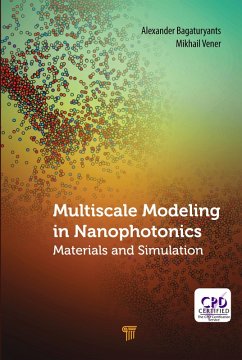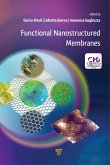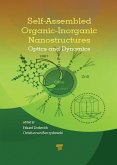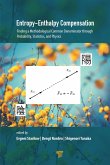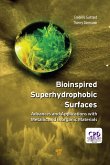The idea of theoretically predicting the useful properties of various materials using multiscale simulations has become popular in recent years. Of special interest are nanostructured, organic functional materials, which have a hierarchical structure and are considered materials of the future because of their flexibility and versatility. Their functional properties are inherited from the molecule that lies at the heart of the hierarchical structure. On the other hand, the properties of this functional molecule, in particular its absorption and emission spectra, strongly depend on its interactions with its molecular environment. Therefore, the multiscale simulations used to predict the properties of organic functional materials should be atomistic, that is, they should be based on classical and/or quantum methods that explicitly take into account the molecular structure and intermolecular interactions at the atomic level.
This book, written by well-known specialists in theoretical chemistry, focuses on the basics of classical mechanics, quantum chemistry methods used for molecular disordered materials, classical methods of molecular simulations of disordered materials, vibronic interactions, and applications (presented as multiscale strategies for atomistic simulations of photonic materials). It has been edited by Professor Mikhail Alfimov, a renowned Russian scientist, a full member of the Russian Academy of Sciences, Russia, and the founder, first director, and now research supervisor of the Photochemistry Center of the Russian Academy of Science, Russia. Professor Alfimov's main research interests are in the field of photochemistry and photophysics of molecular and supramolecular systems. The book is a great reference for advanced undergraduate- and graduate-level students of nanotechnology and molecular science and researchers in nano- and molecular science, nanotechnology, chemistry, and physical chemistry, especially those with an interest in functional materials.
This book, written by well-known specialists in theoretical chemistry, focuses on the basics of classical mechanics, quantum chemistry methods used for molecular disordered materials, classical methods of molecular simulations of disordered materials, vibronic interactions, and applications (presented as multiscale strategies for atomistic simulations of photonic materials). It has been edited by Professor Mikhail Alfimov, a renowned Russian scientist, a full member of the Russian Academy of Sciences, Russia, and the founder, first director, and now research supervisor of the Photochemistry Center of the Russian Academy of Science, Russia. Professor Alfimov's main research interests are in the field of photochemistry and photophysics of molecular and supramolecular systems. The book is a great reference for advanced undergraduate- and graduate-level students of nanotechnology and molecular science and researchers in nano- and molecular science, nanotechnology, chemistry, and physical chemistry, especially those with an interest in functional materials.
Dieser Download kann aus rechtlichen Gründen nur mit Rechnungsadresse in A, B, BG, CY, CZ, D, DK, EW, E, FIN, F, GR, HR, H, IRL, I, LT, L, LR, M, NL, PL, P, R, S, SLO, SK ausgeliefert werden.

